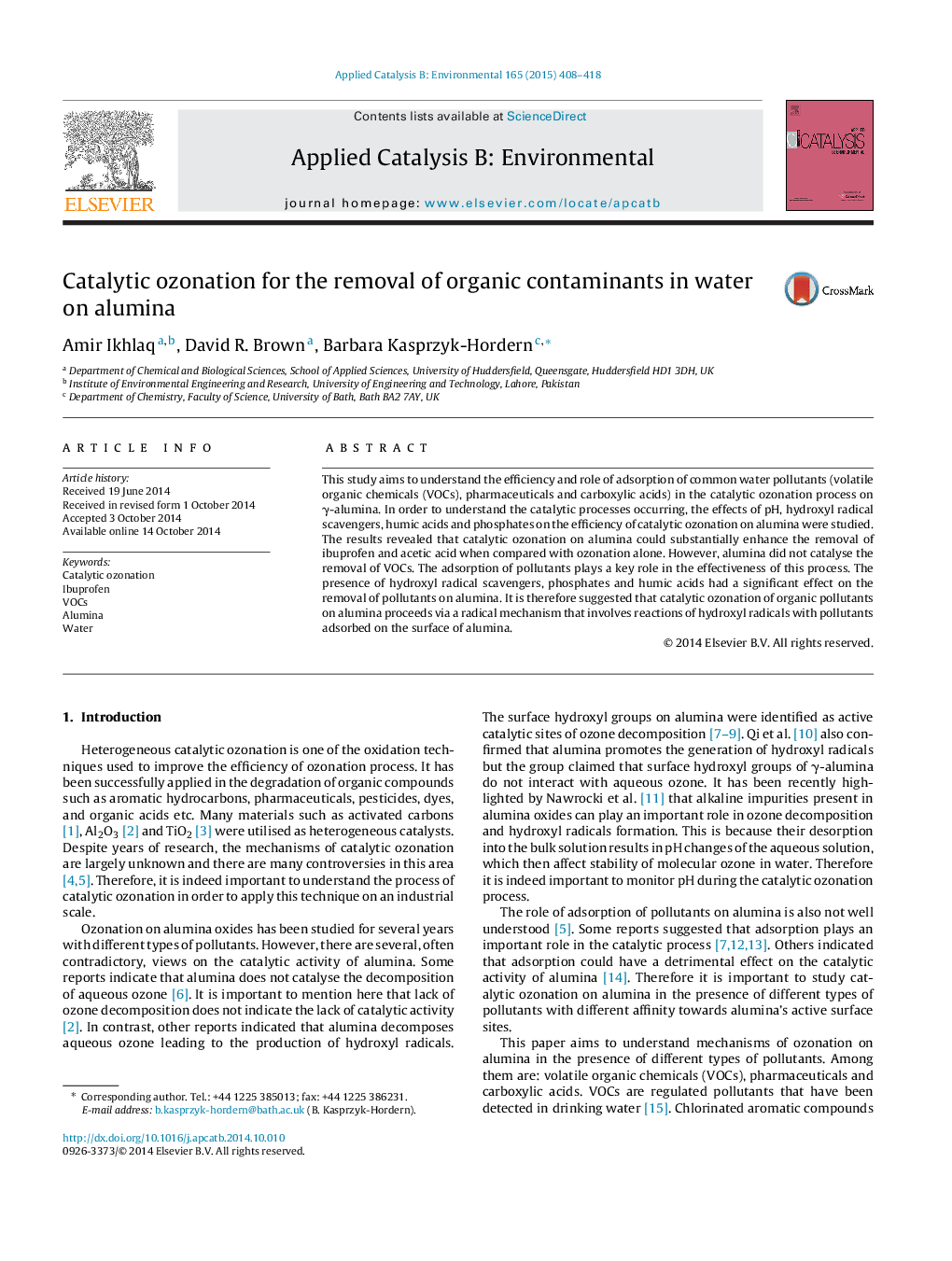| Article ID | Journal | Published Year | Pages | File Type |
|---|---|---|---|---|
| 45571 | Applied Catalysis B: Environmental | 2015 | 11 Pages |
•Catalytic ozonation of organic compounds on alumina was studied.•Alumina showed high catalytic activity during ibuprofen and acetic acid ozonation in water.•No significant catalytic activity of alumina was observed during VOCs ozonation.•Catalytic ozonation on alumina proceeds via hydroxyl radical mechanism.•Surface reactions are important for the effective removal of pollutants on alumina.
This study aims to understand the efficiency and role of adsorption of common water pollutants (volatile organic chemicals (VOCs), pharmaceuticals and carboxylic acids) in the catalytic ozonation process on γ-alumina. In order to understand the catalytic processes occurring, the effects of pH, hydroxyl radical scavengers, humic acids and phosphates on the efficiency of catalytic ozonation on alumina were studied. The results revealed that catalytic ozonation on alumina could substantially enhance the removal of ibuprofen and acetic acid when compared with ozonation alone. However, alumina did not catalyse the removal of VOCs. The adsorption of pollutants plays a key role in the effectiveness of this process. The presence of hydroxyl radical scavengers, phosphates and humic acids had a significant effect on the removal of pollutants on alumina. It is therefore suggested that catalytic ozonation of organic pollutants on alumina proceeds via a radical mechanism that involves reactions of hydroxyl radicals with pollutants adsorbed on the surface of alumina.
Graphical abstractFigure optionsDownload full-size imageDownload as PowerPoint slide
